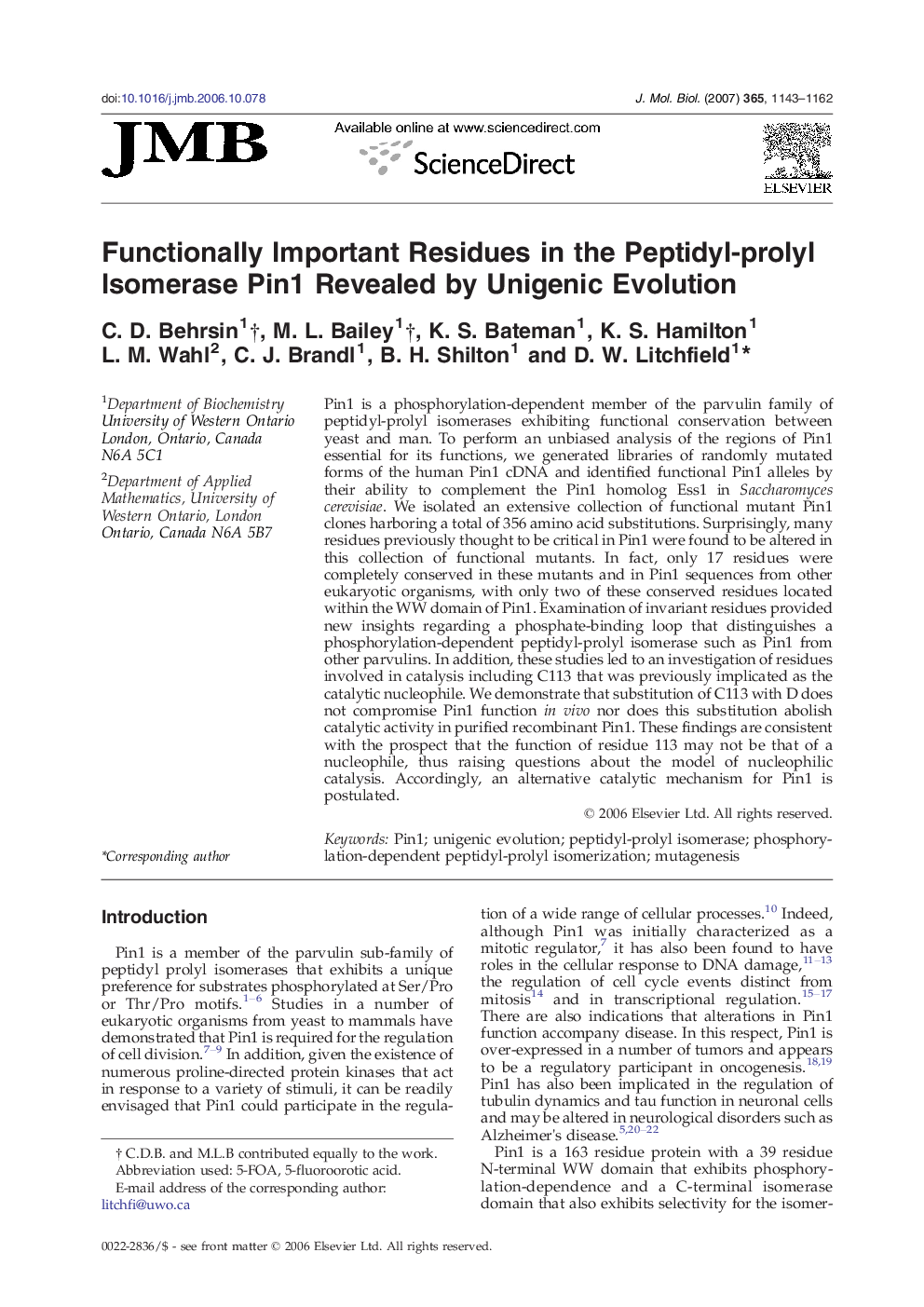| Article ID | Journal | Published Year | Pages | File Type |
|---|---|---|---|---|
| 2188930 | Journal of Molecular Biology | 2007 | 20 Pages |
Pin1 is a phosphorylation-dependent member of the parvulin family of peptidyl-prolyl isomerases exhibiting functional conservation between yeast and man. To perform an unbiased analysis of the regions of Pin1 essential for its functions, we generated libraries of randomly mutated forms of the human Pin1 cDNA and identified functional Pin1 alleles by their ability to complement the Pin1 homolog Ess1 in Saccharomyces cerevisiae. We isolated an extensive collection of functional mutant Pin1 clones harboring a total of 356 amino acid substitutions. Surprisingly, many residues previously thought to be critical in Pin1 were found to be altered in this collection of functional mutants. In fact, only 17 residues were completely conserved in these mutants and in Pin1 sequences from other eukaryotic organisms, with only two of these conserved residues located within the WW domain of Pin1. Examination of invariant residues provided new insights regarding a phosphate-binding loop that distinguishes a phosphorylation-dependent peptidyl-prolyl isomerase such as Pin1 from other parvulins. In addition, these studies led to an investigation of residues involved in catalysis including C113 that was previously implicated as the catalytic nucleophile. We demonstrate that substitution of C113 with D does not compromise Pin1 function in vivo nor does this substitution abolish catalytic activity in purified recombinant Pin1. These findings are consistent with the prospect that the function of residue 113 may not be that of a nucleophile, thus raising questions about the model of nucleophilic catalysis. Accordingly, an alternative catalytic mechanism for Pin1 is postulated.
